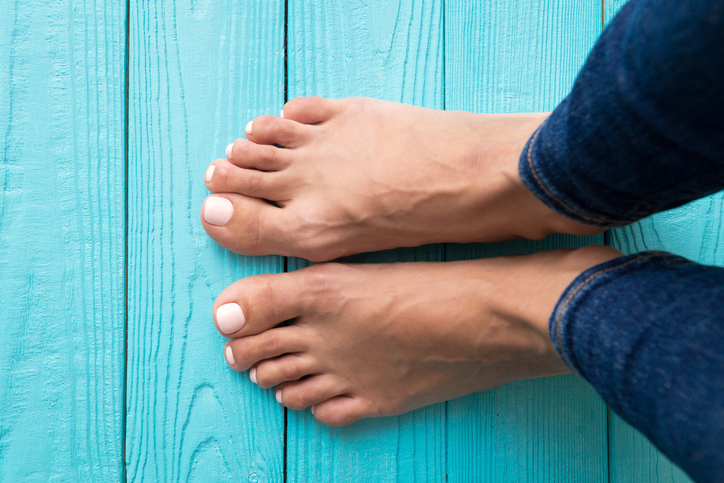
It’s probably no surprise that people with diabetes can sometimes find themselves having to deal with a number of different foot problems. Even ordinary foot problems like calluses, if not taken care of, can lead to some pretty serious complications. So it’s really important to stay ahead of the curve and tackle issues as soon as you start to notice them.
Calluses can be a common issue for a lot of people, even individuals who do not have diabetes. Calluses are most often the result of repeated friction or pressure and they can occur from improper fitting shoes, or if you have certain foot problems or deformities, such as bunions or hammertoes. Structural imbalances that are inherited can also lead to calluses, especially on the ball of your foot. Some people have a greater propensity to form calluses than others, especially around the heel, which can lead to dryness or cracking. Because diabetes can cause changes in the skin of your foot, calluses can occur more often and build up faster, and they can also be quite tender, which is a good thing.
You’re probably asking yourself, “Why on earth is tenderness a good thing?” Because pain is your body’s alarm system and it lets you know when something is wrong. At some point in your life you have probably heard that people with diabetes can develop a condition called “peripheral neuropathy” caused by nerve damage that often results in weakness, pain, and a progressive decrease of sensation in your feet.
Thick, hard calluses that rub against your shoes or the ground can actually puncture the skin. This is unlikely to happen to people with normal sensation in their feet because the feeling of pain would alert them to stop walking and address the problem long before it gets too serious. On the other hand, a person with diabetic neuropathy may not feel anything until it’s too late! The underlying skin may be punctured and an infection may have started without the person knowing. If untreated, this could lead to an infected diabetic ulcer, which is even worse.
Don’t worry, you can easily prevent these serious problems from happening by following just a few simple precautions and taking some time every day to treat your feet!
Know your diabetic foot risk level by asking your physician or podiatrist to test your protective sensation and circulation. If you have diabetic neuropathy or poor circulation, seek medical attention for your calluses from a podiatrist or other medical professional on a regular basis.
Wear proper fitting shoes with ample room in the toebox. Women of course, should avoid severely pointed or high-heeled shoes.
Over-the-counter inserts such as Superfeet may help with calluses on the ball of the foot.
Use a pumice stone (if you don’t have neuropathy) regularly after showering or bathing. Apply a moisturizer daily (avoid the area in between the toes).
For stubborn calluses, especially around the heels, consider a lotion that contains agents which chemically break down the callus (called a kertolytic). A common brand is Amlactin and is available over the counter. I often tell patients to apply this at night and cover the feet with stockings. This really helps drive the medicine into the troubled areas and softens the callus so you can gently scrape off the top layer the next day with a pumice stone after bathing. This often needs to be done several days in a row until the callus is under control.
Beware of “Eggs” and corn cutters. These “cheese grater” or blade-like devices can be risky, especially for people with diabetes. It’s easy to slice off a healthy layer of skin with these types of products.
Avoid so-called corn removers that contain salicylic acid in liquid or the adhesive form. These products can cause problems if used improperly.
Inspect your feet often. Be alert for signs of infection, which can include redness, draining, foul odor, swelling or obvious breaks in the skin.
And lastly, contact your healthcare provider if you have any concerns.


Thank you. This type of reminder and recommend of a product i can get easily is so helpful. I have tried different things in the past but they don’t seem to do much. Also, was using the scrapper on my foot, will stop. Have had this bad callus on my foot since very young and before having D2. Will treat it differently since you’ve reminded me.
Thank you for your comments, Mel and hope Dr. Wargon’s suggestions work well for you!
Very useful information and the mention of cream that helps.
Thank you.
Thank you from Montreal. Be well, stay healthy, and God bless you and yours.
I have a callus that it has a little bit of blood drainage.does that mean infection
If the blood is green and pussy and smells really bad, then yes! Just kidding. If there’s just blood, it doesn’t necessarily mean there’s an infection, but you should get it looked at for sure.
Craig, a great compilation! Diabetic foot risk often shows up in the form of a callus. A good pair of soft socks can offer extra cushion and reduce friction. They can keep the feet dry which ultimately lowers the chances of fungal infections. It acts as a barrier between your shoes and skin which prevents similar conditions.